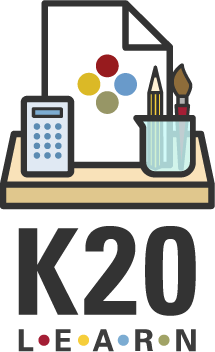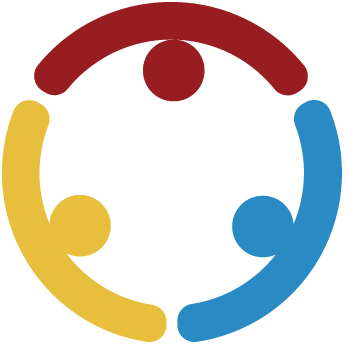Summary
In this activity, students are introduced to the foundational concepts of the engineering design process through collaborative, hands-on problem-solving. They will learn to think critically, plan strategically, and revise thoughtfully as they tackle real-world design challenges. The goal is to help students internalize the value of iteration, teamwork, and applying structured thinking to creative problem-solving.
Essential Questions
How can we use the engineering design process to solve real world problems?
Learning Objectives
Describe the key stages of the engineering design process and explain their purposes.
Collaboratively apply the engineering design process to solve open-ended challenges.
Reflect on their problem-solving process to identify strengths and areas for improvement.
Snapshot
Engage
Students will complete a timed engineering challenge to build a tall tower using common classroom items.
Explore
Students will debrief and brainstorm what could have helped them (process or items) better build their tower.
Explain
Students are introduced to the engineering design process and time to use the process to plan revisions to their earlier design.
Extend
Students will demonstrate their understanding of the engineering design process by creating a comic that shows how they would move through each phase to solve a problem.
Extend 2 (optional)
If students need more practice with the engineering design process, consider working through a sample scenario as a class.
Evaluate
Students holistically reflect over the session’s essential question using the Glow and Grow instructional strategy.
Materials List
Activity Slides (attached)
Cognitive Comics (attached; one per group)
Pen/pencil
Sticky Notes and Chart or poster paper (optional)
Materials for STEM Activity:
Cups (assorted sizes; 10 per group); Pipe cleaners (20 per group); Scrap paper (plain, cardstock, or newspaper; 20 sheets per group); Tongue depressors / craft sticks (25 per group); Glue sticks (2 per group); White glue (1 bottle per group); Tape (masking or painter’s; 1 roll per group); Rubber bands (20 per group); Velcro dots (optional; 6 pairs per group); Scissors (1 per student in group); and Ruler or measuring tape (1 per group).
Engage
30 Minute(s)
Use the Activity Slides to facilitate this session. Display slide 2 and the title of this session. Have students find a partner or create a small group. Move to slide 3 and instruct students to use the materials provided to create a tower within the allotted time. Try not to provide any additional information or feedback as students work. Start the 5-minute K20 timer on the slide and allow students to work for only five minutes.
When the timer goes off, move to slide 4 and measure each tower to see which was the tallest. Ask for volunteers to share their experiences. Be sure to have students highlight the challenges and ask guiding questions like: “What information they would have found helpful in completing the task? Or How do you think having a clear design process might have helped your team?”
Transition through slides 5-6 to review the essential question and learning objectives in as much detail as necessary.
Explore
20 Minute(s)
Move to slide 7. Share the scenario on the slide explaining that this was the guiding question for their earlier activity. Invite students to reevaluate their towers in light of the new information. Transition to slide 8 and inform students they have five more minutes to make changes to their prototype. Afterwards, test the towers again and ask for volunteers to share what changes they made and why.
Share with students that they just participated in the engineering design process.
Explain
25 Minute(s)
Move to slide 9 and play the “The Engineering Design Process: A Taco Party” video by KQED Quest to introduce the engineering design process.
Next, transition through slides 10-16 and review each phase of the design process in more detail as needed. Be sure to ask students how their experiences building their towers is reflected in each phase. For example, they participated in the “Reflect and Improve” when they went back and made adjustments.
Extend
25 Minute(s)
Have students get back with their previous group or create a new group and pass out the Cognitive Comics handout one per group. Display slide 17 and introduce students to the Cognitive Comics strategy. Instruct students to create their own scenario and visually depict how they would work through each of the Engineering Design Process phases. If students struggle to think of what to draw, consider unhiding slide 18. Allow students time to work.
After each group has completed their comic, ask for volunteers to share or if time allows, have everyone share.
Extend 2 (optional)
250 Minute(s)
If your students need more scaffolding with the engineering design process, we suggest walking through one of our STEM Challenge resources like STEM Challenge: Eggstravaganza as a class. The goal of working through a model scenario together is to familiarize students with the process of documenting their work in a science notebook and examining their expectations for each phase.
Evaluate
15 Minute(s)
Move to slide 19 and introduce students to the Glow and Grow strategy. Either pass out a sticky note to each student and have them write “Glow” and “Grow” at the top of each side or have them complete this in their scientific notebook. Invite students to read the essential question again and consider question 1: How they have done well with the engineering design process today? And then have them consider question 2: How they can improve using the engineering design process?
Research Rationale
This study responds to the global call for enhancing student engagement in STEM (Science, Technology, Engineering, and Mathematics) through both formal and informal learning environments. The authors highlight the growing importance of out-of-school STEM programs in fostering student interest and positive attitudes toward STEM disciplines and careers. Drawing on prior research, they emphasize that such programs offer flexible, interdisciplinary learning opportunities that are often constrained in traditional classroom settings. The study aims to evaluate the impact of a university-based, out-of-school STEM program on sixth-grade students’ attitudes toward STEM and related careers.
For the full literature review click HERE.
Resources
Blue Origin. (2025). Home. Club for the future. https://www.clubforfuture.org/
K20 Center. (n.d.). Cognitive comics. Strategies. https://learn.k20center.ou.edu/strategy/198
K20 Center. (n.d.). Glow and grow. Strategies. https://learn.k20center.ou.edu/strategy/4962
K20 Center. (n.d.). Thinking hats. Strategies. https://learn.k20center.ou.edu/strategy/3434
K20 Center. (2021, September 21). 5 Minute Timer. YouTube. https://www.youtube.com/watch?v=EVS_yYQoLJg&list=PL-aUhEQeaZXLMF3fItNDxiuSkEr0pq0c2&index=7
KQED Quest. (2017, April 12). The engineering design process: A tacopParty. YouTube. https://www.youtube.com/watch?v=MAhpfFt_mWM
Smithsonian National Air and Space Museum. (2023, April 11). The engineering design process. YouTube. https://www.youtube.com/watch?v=MFGg1calQ6k
Warren, M. (n.d.). K20 LEARN | The impact of a STEM education program on students' attitudes toward STEM and STEM careers



